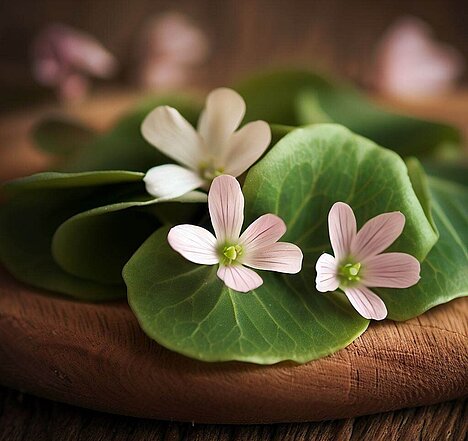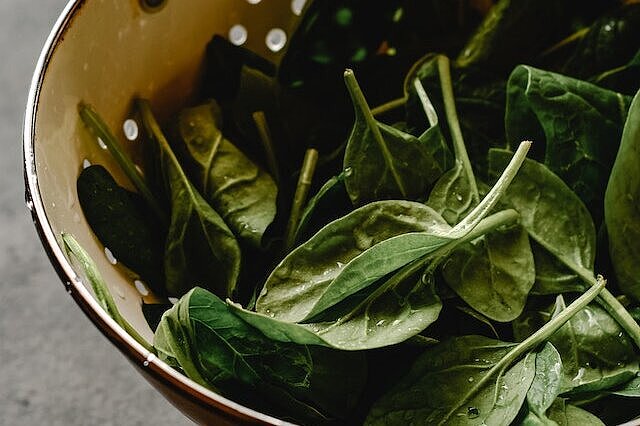Common ragwort

Are you looking for a natural and nutritious food supplement for your dog? Then you should take a look at the common platewort (Claytonia perfoliata). This wild herb is not only delicious, but also rich in vitamins and minerals. In this article, you'll find out more about common ragwort, its advantages and disadvantages for dogs and how you can best use it.
What is the common ragwort?
Common ragwort is a plant species from the labiate family (Montiaceae). It originally comes from western North America, where it was prized as a food by the indigenous people. Today it is also widespread in Europe and is cultivated as a winter vegetable or collected from the wild.
The common bedstraw has fleshy leaves that sit on long stalks. The leaves are plate-shaped and surround the inflorescences. The flowers are white or pink and appear in spring. The common ragwort has a mildly spicy flavor with a slightly sour, nutty and salty note.
What are the benefits of common bedstraw for dogs?
Common ragwort is a very healthy wild herb for dogs. It contains large amounts of vitamin C, vitamin A, calcium, iron and magnesium. These nutrients strengthen your dog's immune system, bones, teeth and blood. It also has anti-inflammatory, diuretic and digestive properties.
You can use common ragwort raw or cooked as a food supplement for your dog. It is particularly suitable for dogs with allergies or gastrointestinal problems. You can also offer it as a treat or reward during training.
What are the disadvantages of wild ragwort for dogs?
Common ragwort has no serious disadvantages for dogs. Nevertheless, there are a few things you should bear in mind:
- Common bedstraw contains oxalic acid, which can lead to kidney stones if eaten in excess. For this reason, wild herbs should only be fed in normal quantities and not on a daily basis. A large proportion of the oxalic acid is lost during cooking.
- Common wild herbs can have a laxative effect if your dog eats too much of them. You should therefore increase the amount slowly and observe how your dog reacts to it.
- Common ragwort can be contaminated with pesticides or heavy metals if you collect it by the roadside or in unclean places. Therefore, only use fresh, untreated wild herbs or grow them yourself.
Common ragwort is a wild herb with fleshy leaves and a mildly spicy flavor. It contains many nutrients such as vitamin C, vitamin A, calcium, iron and magnesium and can support the immune system, bones and digestion of dogs. Nevertheless, it should be fed in moderation as it contains oxalic acid, which can cause kidney stones if consumed in excess. You should also pay attention to the origin of the plant to avoid contamination with pesticides or heavy metals.
If you notice any signs of hypersensitivity or poisoning in your dog, you should see your vet immediately. We are not a substitute for a vet, but we try to be as accurate as possible. Every dog reacts differently and we recommend you get a second opinion or consult your vet if in doubt.
Stay healthy and take good care of your four-legged friend!😊
Similar to Common ragwort
Purslane is a plant from the purslane family that originally comes from Asia. It is also known as postelein or winter purslane and often grows wild along roadsides or in fields. Its stems and leaves...
Spinach is a plant from the goosefoot family that originally comes from Asia. It has been cultivated and eaten as a vegetable for centuries. Spinach has large, dark green leaves that are rich in...
Swiss chard is a plant that originally comes from the Mediterranean region. It has been used as a food and medicinal plant since ancient times. Swiss chard has large, dark green leaves and thick...
Meadow sorrel(Rumex acetosa) is a widespread herbaceous plant that can be found in meadows, gardens and along roadsides. It is known for its elongated, lush green leaves and small, reddish flowers....



